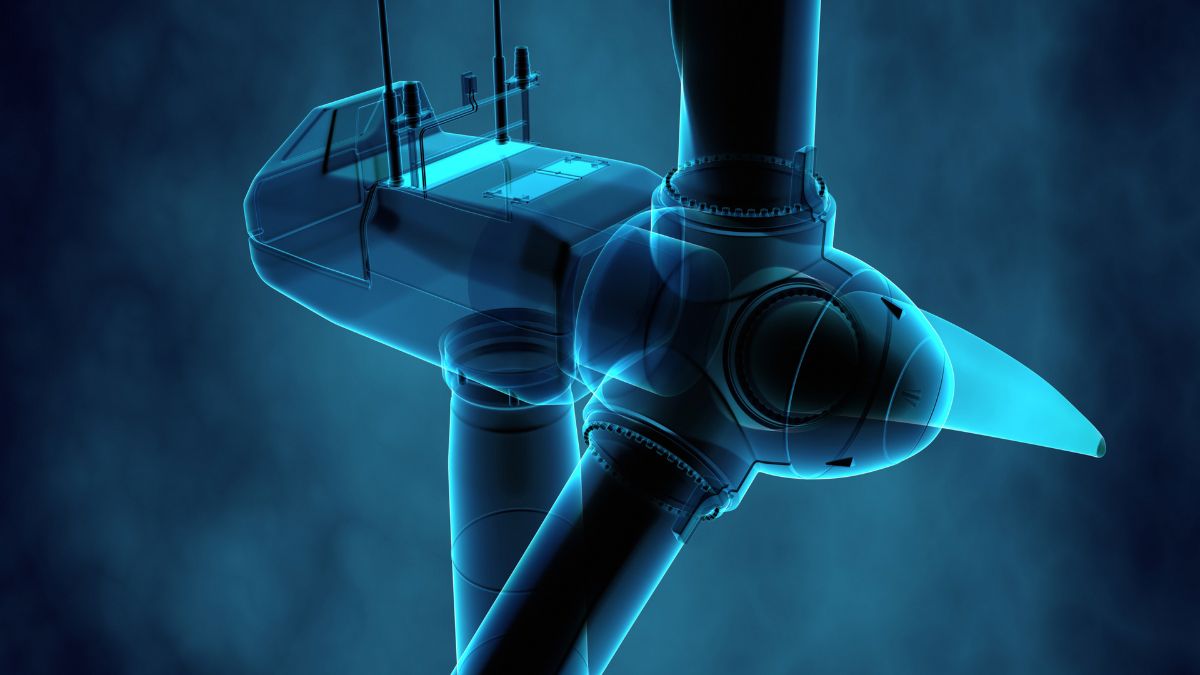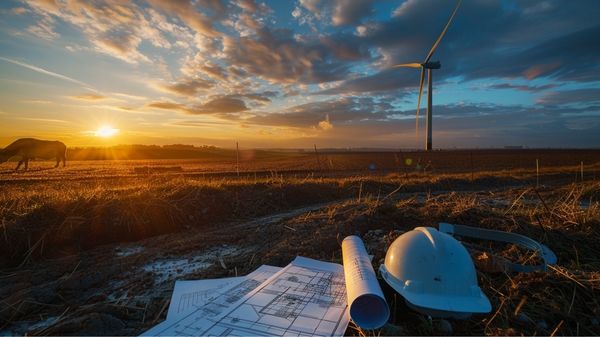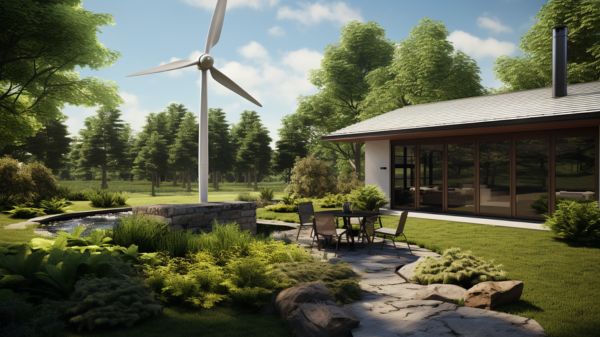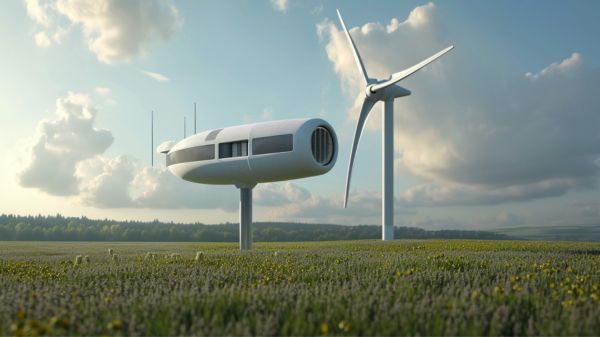Are you yearning to harness the power of the wind and generate your own electricity? Look no further than this wind turbine DIY project! In this article, we will guide you through the thrilling journey of building your very own wind turbine.
With a few basic materials and tools, you can assemble a generator that will not only save you money but also contribute to a greener future. So, roll up your sleeves and let’s dive into the exciting world of DIY wind turbine!
Key Takeaways
- DIY wind turbine construction requires specific materials and tools.
- There are different design options for wind turbines, including horizontal-axis, vertical-axis, and hybrid designs.
- Wind turbines offer various benefits, such as renewable energy generation, reduced dependence on fossil fuels, lower greenhouse gas emissions, and energy independence in remote areas.
- Factors to consider when using wind turbines include wind resources, site location, and local regulations.
Materials and Tools for Wind Turbine DIY
Before you embark on your wind turbine DIY project, it’s crucial that you gather all the necessary materials and tools. The first step is to make a comprehensive list of the materials you’ll need, such as PVC pipes, blades, generator, and wiring. Additionally, ensure you have the right tools on hand, including a drill, saw, wrenches, and a multimeter for testing.
List of Materials
To assemble your DIY wind turbine, you’ll need the following materials:
- An old hoverboard
- A 6 inch PVC pipe
- 5mm round metal plates
- 1 inch metal strips
- Plywood
- Nut and bolts
- A 2 inch galvanized pipe
These materials will enable you to create your very own DIY wind turbine, whether it’s a vertical or mini generator. The old hoverboard can be repurposed for its motor, which will serve as the main power source for the turbine. The PVC pipe will act as the main structure, providing stability and support.
The round metal plates and metal strips will be used to construct the blades, while the plywood will form the base. Lastly, the nut and bolts, along with the galvanized pipe, will help secure and connect all the components together. With these materials, you’ll be well on your way to generating your own clean and sustainable energy.
Now, let’s move on to the list of tools you’ll need for this project.
List of Tools
You’ll need a hand drill, a jig saw, an angle grinder, a soldering iron, pliers, and other hand tools for this project.
Here are three essential tools that will help you in building your own DIY wind turbine:
- Hand Drill: This versatile tool will come in handy for drilling holes in various parts of your wind turbine, such as the blades or the generator housing. It allows for precise and controlled drilling, ensuring that everything fits together perfectly.
- Jig Saw: A jig saw is crucial for cutting the blades of your wind turbine. It enables you to create the desired shape and size, ensuring optimal wind capture. Make sure to choose a blade suitable for cutting through the material you’re using, whether it’s wood or plastic.
- Angle Grinder: The angle grinder is a powerful tool that will assist you in shaping and smoothing the edges of the blade. It can also be used to cut metal or other tough materials, making it an essential tool for this project.
With these tools at your disposal, you’re ready to start assembling the generator for your DIY wind turbine.
Now that you have the necessary tools, let’s move on to assembling the generator for your wind turbine.
Disclosure: We are participant in the Amazon Services LLC Associates Program, an affiliate advertising program designed to provide a means for sites to earn advertising fees by advertising and linking to Amazon.com.
Assembling the Generator for Wind Turbine DIY
First, make sure you have all the necessary components for assembling the generator for your wind turbine DIY project. Below is a table outlining the required components:
| Component | Description |
|---|---|
| Brushless hub motor | Salvaged from an old hoverboard, serves as the generator for your wind turbine |
| Rotor and stator | Found within the disassembled hub motor, responsible for converting wind energy into electricity |
| Wiring | Connects the generator to the rest of the wind turbine system |
| Mounting bracket | Secures the generator to the wind turbine tower |
To assemble the DIY wind turbine generator, begin by reassembling the hub motor and ensuring the rotor and stator are aligned properly. Connect the wiring according to the manufacturer’s instructions, making sure all connections are secure. Finally, mount the generator onto the wind turbine tower using the provided bracket. With the generator assembled, you can now move on to the next step of the wind turbine DIY project: blades adapter and assembly.
Related Article: Generator for Wind Turbine DIY: Wind Energy Made Easy.
Disclosure: We are participant in the Amazon Services LLC Associates Program, an affiliate advertising program designed to provide a means for sites to earn advertising fees by advertising and linking to Amazon.com.
Blades Adapter and Assembly
Now that the generator is assembled, it’s important to focus on securely attaching the blades adapter to the rotor. This adapter, made of steel plates, plays a crucial role in converting wind energy into mechanical energy.
To ensure a successful wind turbine DIY project, follow these steps:
- Drill Holes: Carefully drill holes in the steel plates to mount them on the rotor. These holes will not only hold the plates securely in place, but also allow for the attachment of the blades.
- Proper Alignment: Ensure proper alignment of the adapter with the rotor. This will help maintain balance during assembly, which is essential for the longevity of the bearings.
- Secure Attachment: Once aligned, securely attach the adapter to the rotor using appropriate fasteners. This will ensure that the blades are firmly connected to the rotor, allowing for efficient energy conversion.
By following these steps, you will be one step closer to creating your own DIY small wind turbine generator.
Now let’s move on to the next section, where we will discuss the main holder, moving mechanism, and tail assembly. This will further enhance the functionality of your wind turbine.
Main Holder, Moving Mechanism, and Tail Assembly
To ensure stability and proper direction of the wind turbine, securely attach the tail assembly to the main holder using the hexagonal rod and metal plates.
The main holder, made of a 2 inch wide, 7mm thick steel stripe, serves the crucial function of holding all the components together.
The moving mechanism, adapted from the hinge mechanism of a hoverboard, allows the blades to face the wind. By removing the center piece of the hoverboard body and drilling holes for the moving assembly, you can create a reliable mechanism for optimal wind direction.
Mount the moving assembly onto the pole using adapters, ensuring a secure connection.
The tail assembly, made from 10mm plywood, provides stability and direction for the wind turbine. By cutting and mounting a triangular shape using metal plates, you can create a sturdy tail.
Are DIY wind turbines worth it? Absolutely!
Now, let’s move on to the next section about the blades and paint job.
Blades and Paint Job
For the blades, it’s important to use the heaviest gauge pipe and ensure a consistent taper and pitch for smooth spinning. This will optimize the performance of your wind turbine and ensure efficient energy generation.
Here are some key considerations for the blades:
- Shape: Trim the width and shape of the blades to minimize resistance and maximize airflow. A curved shape with a slight taper towards the tip is ideal.
- Length: Keep the length of the blades at 40 inches to strike the right balance between power generation and stability.
- Painting: Once the blades are cut and shaped, give them a protective coat of metallic black spray paint. This will not only prevent rust but also give your wind turbine a sleek and professional appearance.
With the blades and paint job complete, you are now ready to move on to the next section about DIY wind turbine designs, where we will explore different design options for your project.
DIY Wind Turbine Designs
Once you’ve completed the blades and paint job, you’re ready to explore different design options for your DIY wind turbine.
There are several design options available, each with its own advantages and considerations.
One popular design is the horizontal-axis wind turbine, which consists of a rotor and a tower. The rotor is connected to a generator that converts the wind’s energy into electricity.
Another option is the vertical-axis wind turbine, which has blades that rotate around a vertical axis. This design is often preferred for its ability to capture wind from any direction.
Additionally, there are hybrid designs that combine the best characteristics of both horizontal and vertical-axis turbines. These designs allow for greater efficiency and flexibility in harnessing wind power.
By understanding the different design options, you can choose the one that best suits your needs and location.
Now let’s explore the benefits and factors of using wind turbines.
Disclosure: We are participant in the Amazon Services LLC Associates Program, an affiliate advertising program designed to provide a means for sites to earn advertising fees by advertising and linking to Amazon.com.
Benefits and Factors of Using Wind Turbines
When considering the benefits and factors of using wind turbines, you should evaluate the potential cost savings and environmental impact.
Wind turbines offer several advantages, including renewable energy generation, reduced dependence on fossil fuels, and lower greenhouse gas emissions. By harnessing the power of wind, you can not only save on electricity costs but also contribute to a cleaner and more sustainable future.
Additionally, wind turbines can provide energy independence, especially in remote areas where traditional power sources may be limited.
However, before building a wind turbine, it is important to consider factors such as wind resources, site location, and local regulations. Evaluating these aspects will help you determine the feasibility and efficiency of your wind turbine project.
Moving on to the subsequent section about ‘types of wind turbines,’ you will gain further insight into the different options available to you.
Types of Wind Turbines
Now that you understand the benefits and factors of using wind turbines, let’s delve into the different types of wind turbines available.
There are several options to choose from, depending on your specific needs and preferences.
The first type is the horizontal-axis wind turbine (HAWT), which is the most common and widely used design. It features blades that rotate around a horizontal axis, capturing wind from any direction.
Another option is the vertical-axis wind turbine (VAWT), which has blades that rotate around a vertical axis. This design is more compact and can be installed in areas with limited space.
Additionally, hybrid wind turbines combine features from both HAWT and VAWT designs, providing increased efficiency and versatility.
Lastly, small-scale and off-grid wind turbines are specifically designed for residential or remote locations. These types of wind turbines allow you to generate renewable energy even in areas without access to the grid.
Now that you’re familiar with the different types of wind turbines, let’s explore the components of a wind turbine system.
Related Article: The Best Home Wind Turbines for 2023: Revolutionary Wind Power.
Components of a Wind Turbine System
The generator converts the mechanical energy from the rotor blades into electrical energy. This is the heart of a wind turbine system, as it is responsible for harnessing the power of the wind.
Other essential components of a wind turbine system include:
- Rotor blades: These are designed to capture the kinetic energy of the wind and convert it into rotational motion.
- Tower: The tower supports the rotor blades and raises them to a height where they can capture the maximum amount of wind energy.
- Control system: This system monitors and adjusts the turbine’s performance, ensuring optimal operation and safety.
- Inverter: The inverter converts the generated electrical energy from the generator into a form that can be used by the electrical grid.
- Foundation: The foundation provides stability and support for the entire wind turbine system.
Understanding the different components of a wind turbine system is crucial when it comes to wind turbine sizing and capacity.
Disclosure: We are participant in the Amazon Services LLC Associates Program, an affiliate advertising program designed to provide a means for sites to earn advertising fees by advertising and linking to Amazon.com.
Wind Turbine Sizing and Capacity
To determine the appropriate size and capacity of your wind turbine system, you need to consider factors such as your energy needs, future requirements, and maximizing energy production efficiency.
Start by assessing your current energy consumption and determine how much of it you want to meet with your wind turbine system. Consider any future increase in energy demand, such as new appliances or electric vehicles. It is important to choose a turbine size that matches your energy demand to ensure optimal performance.
Additionally, maximizing energy production efficiency involves selecting a turbine capacity that can effectively harness the available wind resources in your area. This will ensure that your wind turbine system operates at its maximum potential and generates the most electricity possible.
By properly sizing and capacity planning, you can create a wind turbine system that meets your energy needs while maximizing energy production efficiency.
Moving on to wind turbine installation and maintenance, it is crucial to follow proper procedures to ensure the longevity and effectiveness of your system.
Wind Turbine Installation and Maintenance
Make sure you follow the proper procedures for installation and maintenance to ensure the longevity and effectiveness of your wind turbine system.
During the installation process, it is crucial to carefully select and prepare the site, considering factors such as wind speed and obstructions. Proper tower installation and anchoring are essential to ensure the stability and safety of your wind turbine. Additionally, wiring and electrical connections need to be done correctly to ensure the efficient transfer of power.
Regular maintenance and inspections are necessary to identify and address any potential issues and maximize the performance of your wind turbine system.
By adhering to these installation and maintenance guidelines, you can ensure that your wind turbine operates at its optimum efficiency, generating the maximum power output for your needs.
Now, let’s explore wind turbine efficiency and power output.
Wind Turbine Efficiency and Power Output
Now that you have successfully installed and maintained your wind turbine, let’s talk about how to optimize its efficiency and power output.
Wind turbine efficiency refers to how well the turbine converts wind energy into electrical energy. Factors such as the turbine’s design, rotor size, and wind speed can affect its efficiency.
Power output, on the other hand, is the amount of electrical energy that the turbine generates. It is determined by the turbine’s capacity factor, which is the ratio of the actual energy produced to the maximum possible energy that could be produced.
To maximize efficiency and power output, it is important to monitor and analyze the energy production of your turbine regularly. By doing so, you can identify any potential issues or areas for improvement.
Now, let’s move on to discussing wind turbine safety considerations.
Wind Turbine Safety Considerations
When operating your wind turbine, it’s crucial to prioritize safety by adhering to proper grounding and following local regulations. Proper grounding is essential to prevent electrical accidents and protect both you and your equipment. Ensure that your turbine is connected to a reliable grounding system, such as a grounding rod driven into the ground.
In addition, familiarize yourself with the safety guidelines and regulations specific to your location. This will help you identify any potential hazards and ensure that you are in compliance with the necessary safety standards. By taking these safety considerations seriously, you can minimize the risk of accidents and create a safe environment for yourself and others.
Now, let’s explore the financial aspect of wind turbines, including their cost and return on investment.
Wind Turbine Cost and Return on Investment
To determine if investing in a wind turbine is financially viable for you, consider the initial cost of equipment and installation, as well as the potential long-term savings on electricity bills and any available government incentives or grants.
The initial investment for a wind turbine includes the cost of the turbine itself, as well as the additional equipment needed for installation, such as the tower and wiring. While the upfront cost may seem significant, it is important to consider the payback period and return on investment.
Over time, the wind turbine can generate electricity and reduce your reliance on the grid, resulting in long-term cost savings. Additionally, there may be government incentives or grants available to help offset the initial investment.
By carefully evaluating these factors, you can make an informed decision about whether a wind turbine is a financially viable option for you.
Now, let’s explore the integration of wind turbines with other renewable energy systems.
Integration with Other Renewable Energy Systems
Consider combining wind turbines with solar panels to create a hybrid system that maximizes energy efficiency and reduces reliance on the grid.
By integrating these two renewable energy sources, you can harness the power of the wind and the sun to generate electricity for your home or business. This combination allows for a more consistent energy production, as wind and solar resources often complement each other.
Additionally, with the help of battery storage, you can store excess energy generated during peak production times and use it during periods of low generation. This smart energy management and monitoring system ensures that you make the most of your renewable energy sources, reducing dependence on the grid and contributing to a sustainable future.
Now, let’s dive into building the homemade wind generator.
Building the Homemade Wind Generator
Now that you have learned about integrating your homemade wind generator with other renewable energy systems, let’s dive into the process of building the generator itself. Building a homemade wind generator is a cost-effective and rewarding project that can be accomplished with basic tools and inexpensive materials. To give you a clear understanding of the components needed, here is a handy table:
| Component | Description |
|---|---|
| Alternator | Generates electricity from wind energy |
| Fan and clutch assembly | Converts rotational energy into electrical energy |
| Tower | Supports the wind generator and keeps it elevated |
| Mounting bracket | Attaches the generator to the tower securely |
| Built-in voltage regulator | Regulates the voltage output of the alternator |
Conclusion
Congratulations on completing your homemade wind turbine! With the right materials and tools, as well as careful assembly, you’ve successfully created a renewable energy source that will help you harness the power of the wind.
Remember to prioritize safety and consider the cost and return on investment of your wind turbine. It’s also worth exploring how your homemade generator can integrate with other renewable energy systems. So, sit back, relax, and let the wind carry you towards a greener future.




